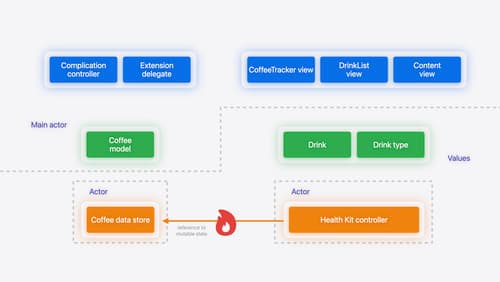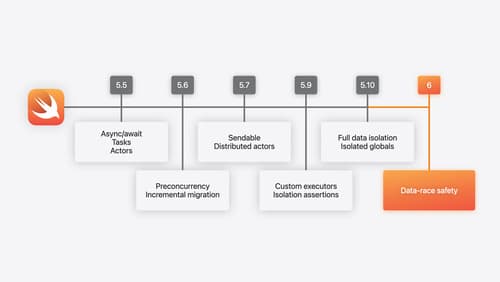why swift 6 is so slow?
Asked on 2024-07-30
1 search
Swift 6 is not inherently slow; in fact, it introduces several improvements aimed at enhancing performance, portability, and the overall developer experience. Here are some key points about Swift 6 from the WWDC sessions:
-
Data Race Safety: Swift 6 introduces a new language mode that provides compile-time data race safety, which helps in writing correct concurrent programs. This feature is opt-in and can be adopted incrementally, module by module (Platforms State of the Union).
-
Performance Enhancements: Swift 6 includes significant improvements to concurrency and generics, which can help in writing more efficient code. The new language mode also includes enhancements to data race checking, ensuring safety and potentially improving performance by avoiding runtime data race issues (What’s new in Swift).
-
Optimization Potential: Swift has a powerful optimizer that can eliminate many performance issues. However, the way you write code can significantly impact how much the optimizer can do. Regularly monitoring performance and identifying hotspots can help in optimizing Swift code effectively (Explore Swift performance).
-
Non-Copyable Types: Swift 6 introduces non-copyable types, which can help in reducing unnecessary copying of data, thereby improving performance (What’s new in Swift).
-
Embedded Swift: Swift 6 also includes a new language subset called Embedded Swift, which is designed to run on highly constrained systems, indicating a focus on performance even in resource-limited environments (What’s new in Swift).
If you are experiencing performance issues with Swift 6, it might be due to specific code patterns or the need for further optimization rather than inherent slowness in the language itself. Regular performance monitoring and leveraging the new features and improvements in Swift 6 can help address these issues.

Explore Swift performance
Discover how Swift balances abstraction and performance. Learn what elements of performance to consider and how the Swift optimizer affects them. Explore the different features of Swift and how they’re implemented to further understand the tradeoffs available that can impact performance.

Migrate your app to Swift 6
Experience Swift 6 migration in action as we update an existing sample app. Learn how to migrate incrementally, module by module, and how the compiler helps you identify code that’s at risk of data races. Discover different techniques for ensuring clear isolation boundaries and eliminating concurrent access to shared mutable state.

What’s new in Swift
Join us for an update on Swift. We’ll briefly go through a history of Swift over the past decade, and show you how the community has grown through workgroups, expanded the package ecosystem, and increased platform support. We’ll introduce you to a new language mode that achieves data-race safety by default, and a language subset that lets you run Swift on highly constrained systems. We’ll also explore some language updates including noncopyable types, typed throws, and improved C++ interoperability.
